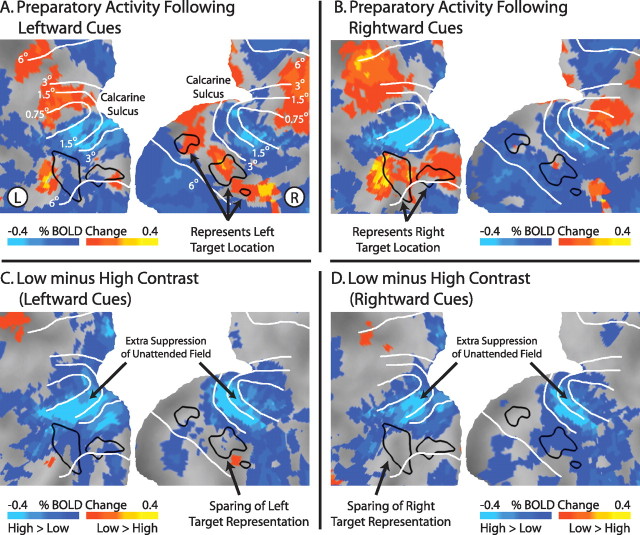Figure 3.
Preparatory activity in portions of visual cortex representing unattended locations is more suppressed in low-contrast versus high-contrast blocks. A, B, Mean BOLD activity, independent of target contrast, after auditory cues indicating the subjects should covertly attend to the upper left or upper right in preparation for visual targets. Black outlines indicate the portions of early visual cortex (V1–V4) corresponding to the target locations, as determined from independent localizer scans. C, D, Difference in preparatory activity in visual cortex in low-contrast versus high-contrast blocks, after leftward (C) or rightward (D) cues. Note that preparatory activity in most of visual cortex is lower in low-contrast blocks versus high-contrast blocks, suggesting extra suppression of the unattended field in low-contrast blocks. This extra suppression mostly spares the portion of cortex representing the attended location. Data maps are summed over the last two pretarget MR frames (frames 5 and 6), smoothed with a 5 mm full-width at half-maximum Gaussian kernel, averaged across subjects, and projected onto a flattened representation of posterior occipital cortex using the PALS (population-average, landmark- and surface-based) atlas (Van Essen et al., 2001). White lines are approximate iso-eccentricity lines based on an average of six subjects from a previous study (Jack et al., 2006).

